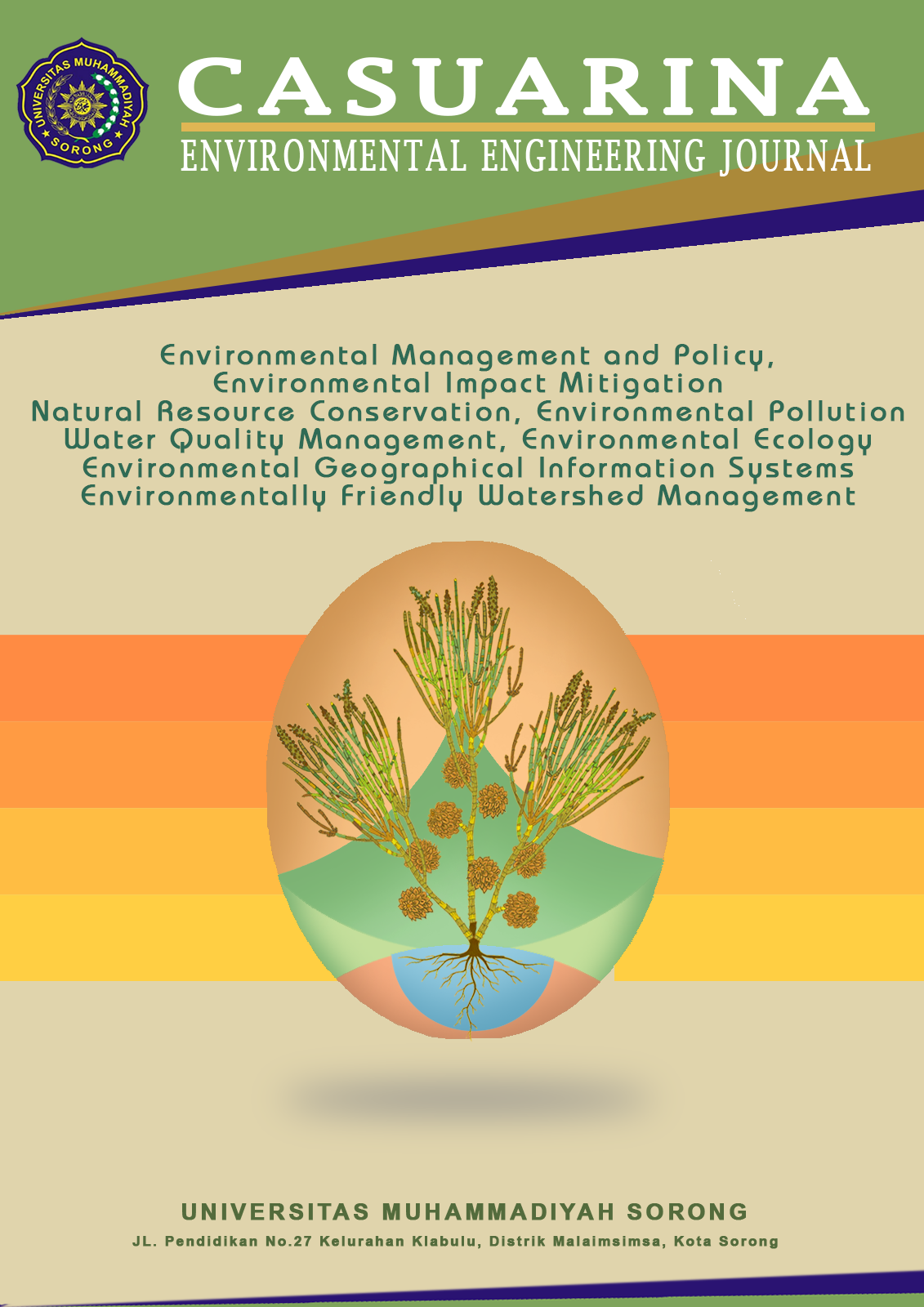Evaluasi Pengelolaan Limbah Bahan Berbahaya dan Beracun (B3) PT.X Industri Rokok Tembakau
DOI:
https://doi.org/10.33506/ceej.v2i1.3754Kata Kunci:
Evaluasi, Industri Rokok Tembakau, Limbah B3Abstrak
Abstrak
Penelitian ini bertujuan untuk mengevaluasi sesuai dengan regulasi yang berlaku. Metode penelitian ini meliputi pengumpulan data baik primer maupun sekunder, observasi lapangan dan wawancara dengan pihak terkait, dan degan literatur yang relevan sebagai bahan pendukung dalam penelitian ini. Pada penelitian ini didapatkan hasil bahwasanya PT X belum menerapkan beberapa langkah pengelolaan limbah B3, termasuk identifikasi dan pemilahan limbah, penyimpanan sementara, serta pengangkutan dan pemrosesan akhir limbah. Namun, terdapat beberapa kendala yang dihadapi, seperti kurangnya fasilitas penyimpanan yang memenuhi standar, keterbatasan dalam pengawasan internal, dan kurangnya kesadaran karyawan mengenai pentingnya pengelolaan limbah B3 yang baik. Penelitian ini menyarankan beberapa perbaikan, seperti peningkatan fasilitas penyimpanan yang sesuai standar, peningkatan program pelatihan dan sosialisasi bagi karyawan, serta penguatan sistem pengawasan dan pemantauan limbah B3. Implementasi rekomendasi ini diharapkan dapat meningkatkan efektivitas pengelolaan limbah B3 di PT. X dan mengurangi dampak negatif terhadap lingkungan serta kesehatan masyarakat sekitar.
Keywords: Evaluasi, Industri Rokok Tembakau, Limbah B3
Referensi
Sulistiani SL. "Analisis Maqashid Syariah Dalam Pengembangan Hukum Industri Halal Di Indonesia". Law Justice. 2019;3(2):91–7.
Miftamala SD, Nirawati L. "Debt To Equity Ratio, Dividend Payout Ratio Dan Earning Per Share Berpengaruh Terhadap Nilai Perusahaan Pada Industri Rokok Yang Terdaftar Di Bursa Efek Indonesia". J Bisnis Indones. 2018;9(2).
Nursabrina A, Joko T, Septiani O. Kondisi Pengelolaan Limbah B3 Industri Di Indonesia Dan Potensi Dampaknya: Studi Literatur. J Ris Kesehat Poltekkes Depkes Bandung. 2021;13(1):80–90.
Maulana A, Pinasang D, Cecillia. Penegakan Hukum Lingkungan Pidana Terhadap Perusahaan Yang Melakukan Dumping Limbah Bahan Berbahaya Dan Beracun (Limbah B3). Lex Adm. 2022;VIII(5):25–33.
Wilujeng ISDP dan SA. Evaluasi Pengelolaan Limbah Bahan Berbahaya dan Beracun (B3) di PT. XYZ. 2023;12(2).
Rachmawati1 S, Sumiyaningsih E, Atmojo TB. Analisis Manajemen Pengelolaan Limbah Padat Medis B3 Di Rumah Sakit Universitas Sebelas Maret Surakarta. Pros SNST Fak Tek [Internet]. 2018;1(1):31–6. Available from: https://publikasiilmiah.unwahas.ac.id/index.php/PROSIDING_SNST_FT/article/view/2297
Unduhan
Diterbitkan
Cara Mengutip
Terbitan
Bagian
Lisensi
Hak Cipta (c) 2024 Casuarina: Jurnal Teknik Lingkungan

Artikel ini berlisensiCreative Commons Attribution-NonCommercial-ShareAlike 4.0 International License.
Please find the rights and licenses in Casuarina: Environmental Engineering Journal. By submitting the article/manuscript of the article, the author(s) agree with this policy. No specific document sign-off is required.
1. License
The non-commercial use of the article will be governed by the Creative Commons Attribution license as currently displayed on Creative Commons Attribution-NonCommercial-ShareAlike 4.0 International License.
2. Author(s)' Warranties
The author warrants that the article is original, written by the stated author(s), has not been published before, contains no unlawful statements, does not infringe the rights of others, is subject to copyright that is vested exclusively in the author, and free of any third party rights, and that any necessary written permissions to quote from other sources have been obtained by the author(s).
3. User/Public Rights
Casuarina: Environmental Engineering Journal's spirit is to disseminate articles published are as free as possible. Under the Creative Commons license, Casuarina: Environmental Engineering Journal permits users to copy, distribute, display, and perform the work for non-commercial purposes only. Users will also need to attribute authors and Casuarina: Environmental Engineering Journal on distributing works in the journal and other media of publications. Unless otherwise stated, the authors are public entities as soon as their articles got published.
4. Rights of Authors
Authors retain all their rights to the published works, such as (but not limited to) the following rights;
- Copyright and other proprietary rights relating to the article, such as patent rights,
- The right to use the substance of the article in own future works, including lectures and books,
- The right to reproduce the article for own purposes,
- The right to self-archive the article (please read our deposit policy),
- The right to enter into separate, additional contractual arrangements for the non-exclusive distribution of the article's published version (e.g., post it to an institutional repository or publish it in a book), with an acknowledgment of its initial publication in this journal (Casuarina: Environmental Engineering Journal).
5. Co-Authorship
If the article was jointly prepared by more than one author, any authors submitting the manuscript warrants that he/she has been authorized by all co-authors to be agreed on this copyright and license notice (agreement) on their behalf, and agrees to inform his/her co-authors of the terms of this policy. Sentralisasi will not be held liable for anything that may arise due to the author(s) internal dispute. Sentralisasi will only communicate with the corresponding author.
6. Royalties
Being an open accessed journal and disseminating articles for free under the Creative Commons license term mentioned, author(s) aware that Casuarina: Environmental Engineering Journal entitles the author(s) to no royalties or other fees.
7. Miscellaneous
Casuarina: Environmental Engineering Journal will publish the article (or have it published) in the journal if the article editorial process is successfully completed. Casuarina: Environmental Engineering Journal's editors may modify the article to a style of punctuation, spelling, capitalization, referencing, and usage that deems appropriate. The author acknowledges that the article may be published so that it will be publicly accessible and such access will be free of charge for the readers as mentioned in point 3.








